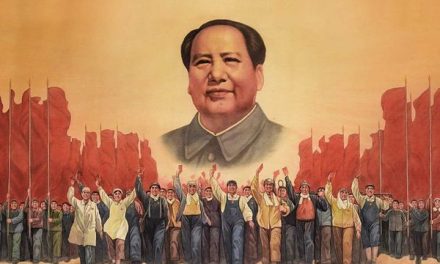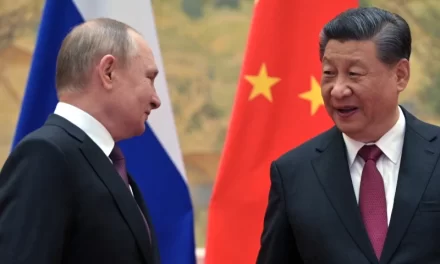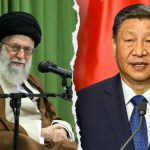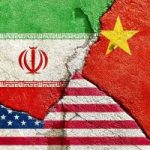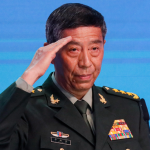By Jianli Yang
The latest U.N. climate summit, or COP27, closed on Sunday with one key breakthrough: the agreement to set up a “loss and damage” fund, which would offer vulnerable nations financial assistance in coping with the climate crisis. U.N. negotiators have established a panel that would spend the next year determining what such a fund would look like, who would give money to it and which countries could tap it.
The Paris climate agreement, among other things, set a major goal: to limit the global temperature rise to 1.5 degrees Celsius compared to pre-industrial levels. According to scientists, if this target is to be attained, all signatory countries would have to agree to reach a net zero goal by the middle of the century and cut greenhouse gas emissions more aggressively over the course of the next decade. The Paris climate agreement includes a measure stating that developed countries should provide USD $100 billion in annual climate finance support to help developing countries transition to low-carbon economies. The main objectives of the recent climate summits have been, first, to persuade countries to make commitments and adopt measures to reduce carbon outputs and ultimately achieve net zero CO2 emissions; and, second, to determine how climate change mitigation funding of $100 billion per year would be allocated and financed.
The first objective was half accomplished. For example, the European Union, the U.S. and other countries proposed the goal of net zero carbon emissions by 2050; China said it would strive to achieve carbon neutrality by 2060; while India admitted that it would need until 2070 to reach net zero carbon emissions. Thus, prior to the summit, officials worked hard on the wording, ultimately agreeing in vague language that they would “achieve net zero carbon emissions by the middle of the century.” Of course, “the middle of the century” is purposely ambiguous. It could mean the year 2045 (Germany has proposed that it will reach net zero carbon emissions by then), or 2050, or 2060, or even 2070.
Even more serious is the fact that the goal of raising $100 billion in climate-related financing still has yet to be reached. Whatever the new “loss and damage” fund has to do with the goal set forth by the Paris climate agreement, the question remains: Where will the money come from?
We must realize that the price of carbon emissions across the world is largely zero (one of the major reasons why climate policies have been so ineffective). The single most important step to find the money needed is to put a market price on the emissions of carbon dioxide and other greenhouse gases, such as methane, and to set up an international regime to effectively collect dues.
There are dozens of carbon pricing plans in place in different countries and regions across the world, each setting its own price (tax) that is levied by the governing regime. But in order not to affect the economic development of their own countries, governments are unwilling to be ruthless in taxing their own businesses. According to World Bank calculations, in 2019, the average global price was about $2 per ton of carbon dioxide. This is far from adequate.
To remedy this problem, the international community must introduce and implement an additional carbon price system. I propose that all countries collect carbon-intensity tariffs and use the funds raised to help reduce emissions wherever most needed.
Each year, the Union of Concerned Scientists publishes a carbon intensity (C.I.) index for each country. The index measures each country’s CO2 emissions divided by its real GDP. The following year, every country must levy a specific tariff rate on all products imported from its trade partner countries according to the latter’s carbon emission intensity. The higher the exporter’s carbon intensity, the higher the tariff rate.
What are the potential benefits of this C.I.-based tariff plan?
- The tariff rate would be set by the same formula and applied indiscriminately for all countries. It’s fair because it’s equal across all nations. And the funds collected must be spent wherever most needed.
- All the existing carbon price plans target the producers of goods. However, consumers cannot shirk their responsibility. If someone wants to consume high C.I. goods, they must pay an added cost for the externality of carbon emissions. Of course, the cost of tariffs will ultimately be shared by manufacturers, importers, exporters, and consumers (in other words, almost everyone).
- Since a country’s exports would be subject to tariffs imposed by other countries at the same rate, this could result in inequalities in the country’s low-carbon industries. This, in turn, would prompt these industries to pressure their own governments to implement policies that favor low-carbon industries and penalize high emissions industries. The end result would be to reduce the country’s incentive to freeride.
- Under this plan, each country would impose tariffs on the products of other countries, which would be easier to implement than imposing environmental taxes on the country’s own businesses. This would help solve the problem of collective action.
- Finally, this plan would affect the bigger traders more. This is desirable.
The big question, however, is who could turn this plan into a reality. Clearly, leadership is needed more than ever before. Perhaps it could begin with a small group of countries that are willing to take on such a leadership role, and steadily expand to be global, or nearly global, in scope. The World Trade Organization, the intergovernmental organization tasked with regulating international trade between nations, should take a decisive, proactive stance. Skeptics may argue that even with a small group of countries willing to adopt this plan, a collective action issue would remain. True, but it would be a much easier one to tackle. Perhaps this is precisely the strategic thinking we need to solve one of the most important collective action problems of our time: decompose the problem into sequentially smaller, more manageable ones, and gradually solve them one after another.




